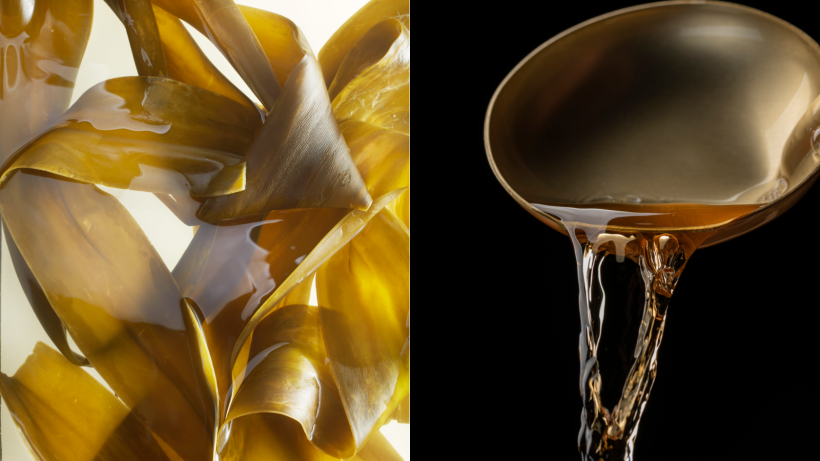Dashi is not a dish - so what is it?

Countless menus include dashi as a dish. That is incorrect. Dashi is an ingredient, not a dish. In fact: this Japanese seasoning is one of the key ingredients used to add flavour and signature to dishes. Discover what dashi is and what it can do for your cooking.
Born out of frugality
Dashi was created in part as a result of Japan's many years of isolation from the rest of the world. This led to widespread poverty and forced people to be frugal with the ingredients they harvested from the soil and the sea. To truly get everything out of a product, people began to infuse the ingredients kombu (dried seaweed) and katsuobushi (shavings of dried and fermented bonito fish). The initial infusion, known as the Ichiban, is completely clear. The second infusion, the Niban-dashi, is more cloudy because the ingredients are fully boiled up. This reduction is used, for example in combination with the intensity of soy sauce, to flavour other dishes like miso soup and the classical Japanese sauce tare.
Comparison with broth
Japanese dashi is often compared with broth as we know it from French cuisine. The biggest similarity between the two might be that both preparations are about extracting flavour from a product into water. That explains the official name, Niban-dashi, which literally translates to ‘boiling to extract flavour'. The difference is that broth is made using a raw product, such as meat or carcasses. Dashi, however, is made using prepared - usually dried - products. Broth also takes longer to make, while dashi is usually done quite quickly.
More than kombu and katsuobushi
The dashi as it now appears on menus was developed in the 20th century, when umami began to grow in popularity. However, dashi can consist of more than kombu and katsuobushi alone. Japanese cuisine includes different types of dashi. There is Niboshi, a dashi made from dried sardines. There is Ago, made from flying fish. The typical umami in a dashi is produced by the glutamates (an amino acid) released during its preparation. However, that flavour does not necessarily come from smoked fish. Dashi originates from the Buddhist Shojin era and actually has a vegetarian background. Many dashis are therefore made from e.g. vegetables such as shiitake and peels of various tuber vegetables. These are often dried, smoked or roasted in order to extract maximum flavour from the products.
Versatile simplicity
Even though the range of products available to them was limited, that did not stop the Japanese people of old from cooking delicious food. There is so much you can do with just a few great basic dashi recipes. Dashi makes an excellent base for ponzu (Japanese citrus sauce), which is often mixed with shoyu (soy sauce). It is also an ideal ingredient to use in marinades and sauces to which you want to add an element of umami.
Four basic dashi recipes
- Shojin-dashi: 1.2 litres water, 15 g shiitake, 35 g kombu.
- Duck dashi: 1.5 kg roasted duck carcass, 2 tbsp salt, 1 leek stem, 100 g carrot , 50 g ginger root, 3.6 litres water, 36 cl sake.
- Vegetable dashi: 400 g vegetables (e.g. white cabbage, lotus root, carrots), 20 g kombu, 2 litres water.
- Eel dashi: 1.2 litres water, 250 g smoked eel, 100 g carrot, 30 g kombu.
Eager to get started with one of these recipes? Discover the ingredients to make it yourself or use our ready-made products. Want to discover more wonderful Japanese products? Learn more about Japanese fish, shellfish and shoyu.


